Editor of this issue: Antanas Klimas
Copyright © 1983 LITUANUS Foundation, Inc.

|
LITUANUS
LITHUANIAN QUARTERLY JOURNAL OF ARTS AND SCIENCES
Volume 29, No.4 - Winter 1983
Editor of this issue: Antanas Klimas ISSN 0024-5089
Copyright © 1983 LITUANUS Foundation, Inc. |

|
JUOZAS BAGDONAS PROFILE OF AN ARTIST
Juozas Bagdonas was born in the village of Videikiai, in the western province of Lithuania called Žemaitija (Samogitia). He studied at the Plungė and Telšiai High Schools. 1929-1933 he studied at the Art School of Kaunas. He obtained his fundamentals in painting at Professor Justinas Vienožinskis' studio.
Bagdonas' first one-man show was held at the Lithuanian-France association hall in Kaunas. Soon other one-man exhibits followed in many other Lithuanian cities.
As a young artist, he received favorable art reviews from the art critics of those days. From 1935 he began to participate in many group exhibitions which were under the sponsorship of the Art Association in independent Lithuania. Bagdonas also represented Lithuania at art shows in Riga (Latvia) and Tallinn (Estonia). He was a member of the Art Association serving terms as secretary and executive director.
To further his knowledge in the field of art, from 1937-39 he studied at the major art capitals of Europe. During this time period, Bagdonas' style could be called realistic-impressionistic. His subjects were mostly nature landscapes of Lithuania, peasant life, although he favored sea scapes fishermen in their habitat at work. The artist favored dark, gray tones and wide brush strokes.
In 1938, for his work Iš jūros grįžus (Return from the Sea) he was awarded the national first prize for figure composition.
During World War II when Lithuania was occupied by both the Soviet Union and Nazi Germany, Bagdonas resided in Vilnius. He worked at the Art Museum and taught art at the arts and crafts school.
Towards the end of World War II, he became a refugee and found himself in Vienna, Austria. Later on, when the war had ended, he resided at Ravensburg in southern Germany. In 1948 he emigrated to Colombia, South America. Here, he worked as a teacher at the national schools of higher education, first at the Colegio Mayor de Cundinamarca and later at the Universidad Nacional de Colombia Escuela de Bellas Artes.
Juozas Bagdonas remained in Colombia for ten years. During this time his style moved towards the decorative and abstract. It was still in Colombia that he created his first abstract paintings.
In 1958 he came to the United States and settled in Washington, D.C., where he established an art studio. In 1960 he organized an art gallery where various artists exhibited their works. During this time period Bagdonas' style evolved into the abstract-expressionistic form.
From 1960 on, the style of the artist has been completely abstract. Many exhibits were organized in various American cities. A great number of them were held in Lithuanian communities.
In 1964 he arrived in New York. Here, he created in the abstract art form and for many of his works used very large canvasses. He shapes his creations spontaneously, guided by the chosen idea by expression, imagination and perception. The flair for space is a characteristic of his abstract forms. The forms are three-dimensional, not flat, the space immense. It is as you were viewing the work from a high mountain, where a large space opens up before you, and in all different directions moves a variety of figures of different shapes. Looking at the painting, one can imagine an erupting volcano, an earthquake, or a collision of two worlds.
As the artist follows this cosmic drama, he seeks to immerse himself into it more deeply and involve his viewers in it also. His creations capture a part of the spiritual life of the contemporary man. These broken, drifting, cracked mountains, those strange fantastic shapes, from which Bagdonas gleans his world on the canvas, lead toward the life of present-day humanity, restless, unsure of the future, beings torn apart by real and imaginary feelings, but forced to live in such conditions.
"In my works," remarks J. Bagdonas, "I seek such ideas and forms which express my outlook and my thoughts on present day life, in the area of man's psychology, emotions, and aspirations."
His technique is painstakingly unique, where the most minute part of the canvas is executed in great detail. In his works a variety of textures and mediums are employed, often he mixes his paints with other materials. Of importance is that the tone of his works must be succulent," remarks Bagdonas. In it there must exist an aerial oscillation, in whose shape the paint takes the form of a fabric, which as a multifaceted whole, brings joy to our feelings and aesthetic experience.
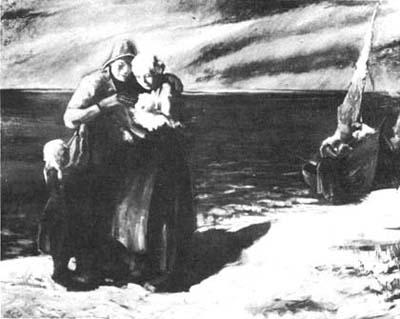
Juozas Bagdonas. Returning from the sea. Oil. 1938. 150 cm x 200 cm.
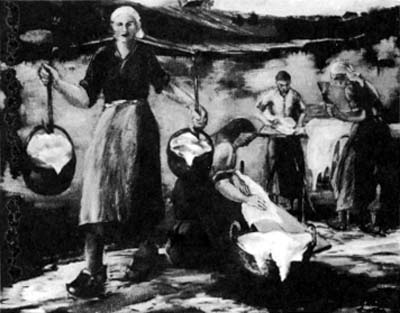
Juozas Bagdonas, Washing clothes. Oil. 1939. 150 cm x 200 cm.
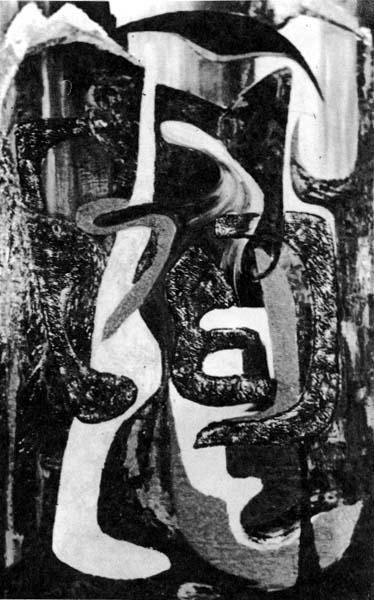
Juozas Bagdonas. Composition, oil. 1967. 6' x 4'.
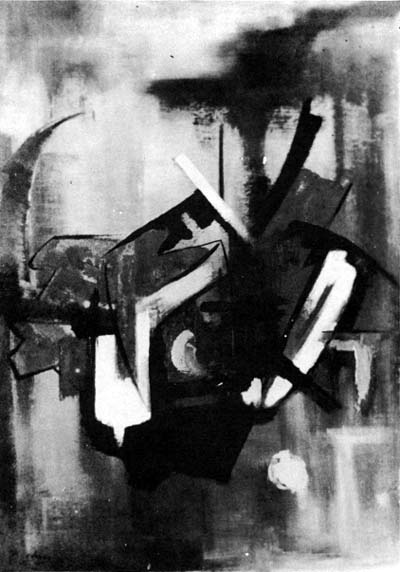
Juozas Bagdonas. Composition, oil. 1962. 35" x 30".
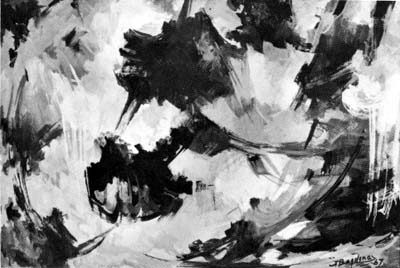
Juozas Bagdonas. Composition, tempera on paper. 1965. 24" x 30".
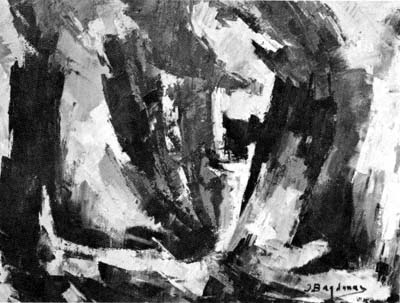
Juozas Bagdonas. Tornado, oil on canvas. 18" x 24". Photo by V. Maželis.
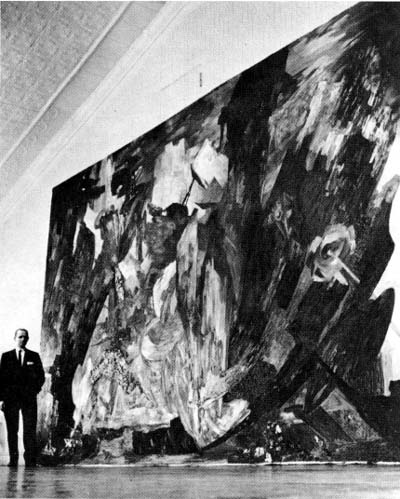
Juozas Bagdonas. Composition, oil on canvas, 1967. 9' x 24'. Photo by V. Maželis.
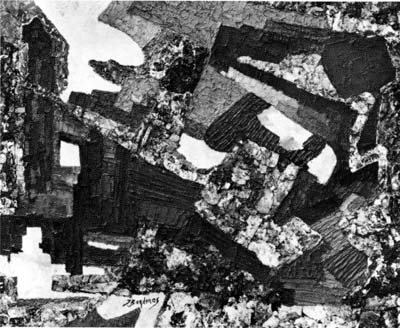
Juozas Bagdonas. Composition, oil on canvas, 1978. 24" x 30". Photo by V. Maželis.
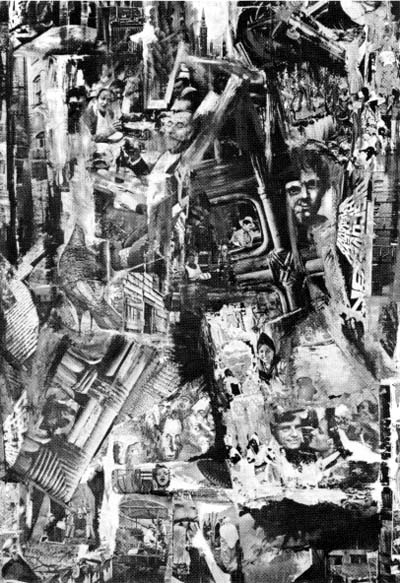
Juozas Bagdonas. Collage, mixed media, 1978. 30" x 50". Photo by V. Maželis.
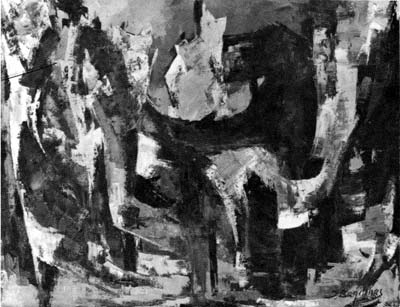
Juozas Bagdonas. Composition, oil on canvas, 1980. 35" x 45". Photo by V. Maželis.
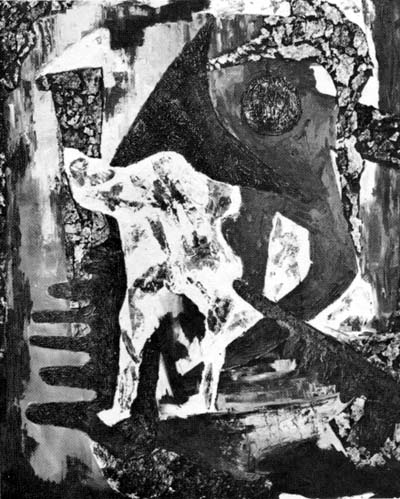
Juozas Bagdonas. Composition, oil on canvas. 6' x 4'. Photo by Vytautas Maželis.